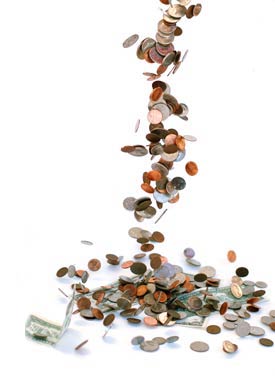 istockphoto pay out around $1.6million (USD) per week to their contributors (Feb 2010), so clearly someone is making money at microstock. How much you can earn has a similar answer to "How long is a piece of string?". How hard you work, how good your photos and keywords are, subjects and style will all have a significant impact on how well your images sell. Artists who spend long hours creating detailed illustrations and vector drawings could earn a similar amount to a photographer with a portfolio only a tenth the size.
istockphoto pay out around $1.6million (USD) per week to their contributors (Feb 2010), so clearly someone is making money at microstock. How much you can earn has a similar answer to "How long is a piece of string?". How hard you work, how good your photos and keywords are, subjects and style will all have a significant impact on how well your images sell. Artists who spend long hours creating detailed illustrations and vector drawings could earn a similar amount to a photographer with a portfolio only a tenth the size.
Earnings Comfort Zone
Photographers are notorious for having low incomes, but that is often through their own choice. Virtually everyone says they would like to earn more money, but when the crunch time comes and you need to sit down and do some difficult work it’s very easy to shy away and continue what you are currently doing. Earning enough money to live on is a comfortable situation for most people, that’s why photographers often earn just enough money to live on. If their income drops they are forced to bite the bullet, put some effort into analyzing their business and perhaps make decisions to step out of the comfort zone to increase their earnings. A lot of photographers work ‘very hard’ at time consuming tasks that bring little financial revenue but in which they take some enjoyment doing, there is nothing wrong with this, it’s personal choice. A typical example might be a backlog of photos to upload, if you enjoy taking photos and earn enough then there is reduced incentive to upload the new ones. I know that this is an over simplified view on what is in fact the complex tapestry of ‘modern life’; my point here is that your motivations, the goals you set and your personality will have a large impact on what you can make selling stock photography.
Calculations
 The things to remember with microstock are that:
The things to remember with microstock are that:
- You earn even when you are on holiday or take a month off (but do it too often and your income will start to fall ever so gradually away) this flexibility benefit is a major driver for people to work in microstock full time.
- Earning 50 dollars a month on one microstock site might not sound a lot for all those hours, but upload those images to all the top 10 agencies and that figure can become 250+ (note that the value is not 10X, as the smaller agencies sell a lot less).
- Income is directly proportional to your efforts, flexibility, and how well you see the market needs, keep yourself informed and up to date with microstock news.
- You enjoy taking photos, if you don't, then go and do something else you find more fulfilling.
Revenue Per Image Per Year
I read recently that macrostock photographers might expect $5 per year income from each image (ozimages.com.au a rights managed collection) others suggest $1 per image per year is a good rule of thumb for the traditional agencies and average income for the photographer being $1.82 (ref on istock forums). For microstock another photographer quotes income as $14 for just istockphoto (reference), the value is about $9 for lee at microstockdiaries and much more modest $3.50 per image per year for myself. The 2008 survey at microstockgroup put the figure at $8.71 per image. You can see by the above that the average income figure swings wildly and is of course very dependant on the quality of your images, the chosen subjects and the keywords you apply to them. The difference between 3 and 9 dollars might not sound much but it's can mean a pay cut of $6000 pa. on a portfolio of 1000 images.
It's near impossible for me to give you any accurate insight into how much you as an individual can earn, I can only tell you my experience, and as a rough estimate you can expect to bring in 30-100 USD per month, per 100 images you have had accepted on the top 6 microstock sites. More difficult for me to measure is how much time I have spent uploading images to these sites to analyse my ROI. A dollar an image a month if you are lucky might not sound a lot, but it's cumulative, they keep on earning, upload another 100 and double it.
Look at an Independent View
As I often find myself writing, one of the nice things about the microstock photographer community is the willingness to share sales figures (that willingness often reduces as photographers move from serious amateur into "microstock pro") there are lots of microstock bloggers out there willing to share their sales stats in monthy graphs.
In early 2010 lookstat (now closed) created a microstock guide for RM and macro RF photographers writing:
"On average contributors see $12-15 annual revenue per image (RPI). Also, select and approval rates are typically far higher than those of RM and RF agencies, so your cost per select is lower."
There are several other places to look at microstock stats microstocktime is a useful site but you can only use it to guesstimate earnings made by others, it's also easy to misinterpret. Above all it shows you the massive range of earnings, portfolio sizes and numbers of downloads per image across shutterstock community.
Microstockgroup publish annual survey results, the 2010 survey results relating to earnings are analysed here
View our recommended microstock sites
Related Posts:
For how long will my photos continue to sell?
Analysing what sells in microstock



It's quiet in here! Add new comment